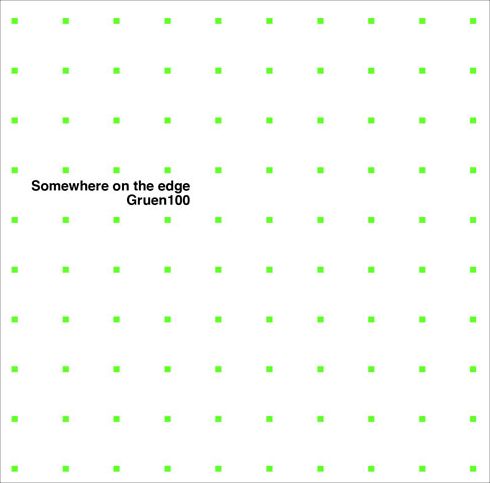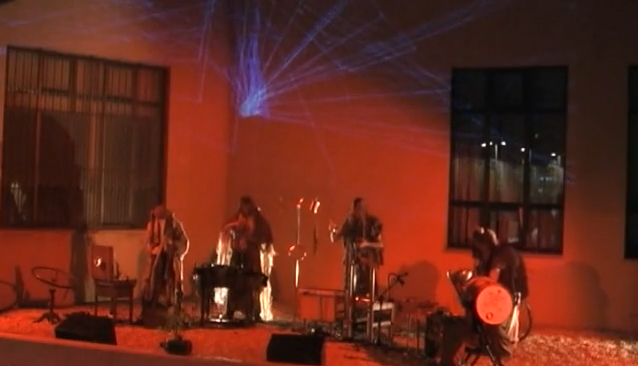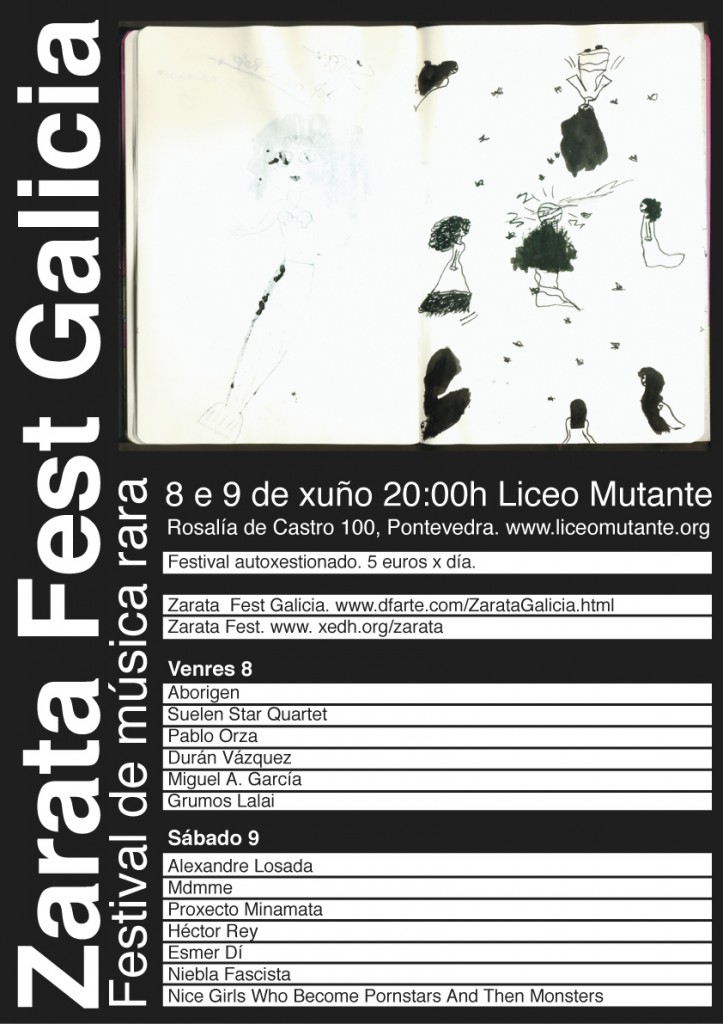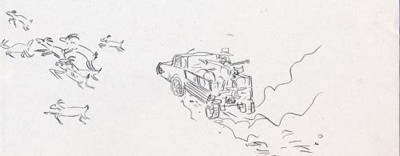V/A: Somewhere in the edge
Monday, June 11th, 20129 orduko disko bat argitaratzea posible ote den edo ez bagenekien. Baina, onar dezaegun, ez da normalean jasotzen den lan horietako bat. Ba, oraingoan muga, mutur edo ertz hortan jarri gaitu Gruenrekorder disketxeak. Izenean eta izanean. Landa grabaketekin egindako musikari eta orokorrean gure inguruneko soinuen fenomenologiari eskainitako Alemaniako plataforma honek urteak daramazki alor honetan nazioartean sortzen diren lan eder aunitz bultzatzen. Eta 100. argitalpena den honek ezin zuen guttiago izan. 47 artista (tartean hurbileko ezagunak: Ruben Garcia, Gilles Aubry, Pablo Sanz, Alan Courtis edo Xabier Erkizia), 47 pieza eta 531 minutu, denak mugan eta mugak entzuten. 9 orduak entzun edo deskargatu nahi izanez gero jo hona: http://www.gruenrekorder.de/?page_id=7284
Edo deskargatu lotura hauetatik:
FLAC / MP3 / ZIP (1.24Gb)
Review: Richard Allen | a closer listen
47 tracks, 531 minutes and 34 seconds: nearly nine hours of field recordings and soundscapes fill every corner of Gruenrekorder’s 100th release, a testament not only to the strength and diversity of the label, but to the number of friends it has made. Not only that – it’s free. The level of excess displayed by such a project is so over-the-top, so ridiculous, that it induces a sense of awe. Where are the sponsors? Where’s the profit? For once, it doesn’t matter. Somewhere on the edge is the telephone book of field recordings; few people will play it from cover to cover, but many will refer to it again and again.
No one expects a nine-hour release to work well as an album; this is a collection. This being said, one change would improve its flow. As currently presented, the tracks are in alphabetical order: egalitarian, but seldom smooth. By luck, similarly-themed pieces occasionally wind up next to each other – for example, Mark Lorenz Kyslea’s “Höfn” and Gerald Fiebeg’s “Horta Harbour”, recorded at harbors in Iceland and Portugal. But more often, similar tracks receive a curious separation. Jay-Dea Lopez’ “From the Edge of Saturn”, which presents radio waves from Saturn’s polar auroras, is 24 tracks removed from Bernhard Gál’s “Void”, in which a laptop is used to process electromagnetic waves from Jupiter, Uranus and Neptune. If these were discs, they would be easy to sort by subject matter and recording mode: water recordings, land recordings, machinery, conversation, soundscape – and of course, a “miscellaneous” disc to cover the unclassifiable.
A curious side effect of the track order is that three of the first five tracks are political. While field recordings in themselves are apolitical, their presentation can take the form of a political act. The choice of what to record reflects one’s leanings, and the act of presentation can challenge the status quo. The opening track (Brandstifer’s “99% and me in NY”) covers the Occupy Wall Street movement – the protests, the conversations, the bongos. jai’s “311 silent Sendai” is a recording of a Japanese no-nukes demonstration, with handheld instruments and occasional trains. Pablo Sanz recorded “Maghrib prayer” in a disputed area of Old Jerusalem. Other selections address the London riots (Matthias Kispert’s “Anarchy in the U.K.”), religion in the wake of the Chinese invasion (Pietro Riparbelli’s “Unbearable Wisdom”) and an edict from leaders of the Polish Catholic Church that cremation, while not prohibited, is pronounced pagan (Hubert Winczyk’s “Poznan Crematory”).
The more traditional political issue presented by field recordings is the intrusion of industry and the elimination of the natural soundscape. Rubén García records the sound of an electrical pole in the rain forest. Alan Courtis highlights the coexistence of natural and urban sounds in Argentina. Chad Clark takes a walk in Chicago and muses on the disconnection of the digital age. But the human element is not a problem for all. Gilles Aubrey captures the sound of uninterested tourists watching a solemn Red Square rehearsal. Frank Rowenta revels in the sound of conversation. Sean O’Neill records people walking around the British Museum. Merzouga contrasts the noises outside a music university with the knowledge of what happens within. murmer introduces us to the bubblings of a natural brewery. Xabier Erkiza combines the sounds of birds, traffic, and calls to prayer.
Just as often, the artists choose to record in empty or deserted spaces. Peter Cusack finds beauty in the sound of containment ships. Matze Schmidt enjoys the sound of the club after the people have gone. One of the collection’s finest pieces, Pierce Warnecke’s “Ghosts along a border”, is a sonic seance that captures a series of sounds that shouldn’t be there. And of course, many concentrate on nature: wind and water, bees and bats, doors and dunes. Mark Peter Wright’s “A Line Made for Listening” is particularly effective, as is the aforementioned “Höfn.” Roughly half of the collection is comprised of such sounds, which range from the barely audible to the fully realized. As patience is required for the overall listening experience, getting through the quieter parts of the longer tracks (some approaching or even exceeding 20 minutes) can be a chore, especially (and ironically) in the N-O section. This section does however include a forgivable indulgence: a field recording made just outside the Gruenrekorder offices. Like many of the tracks, it introduces us to the here and now. In the same way, the concluding track – a recording of the pier from which the Titanic passengers disembarked – becomes intensely topical in light of the anniversary remembrance.
Is Somewhere on the edge the best way to introduce the genre to newcomers? Decidedly not – it’s just too sprawling and undefined. But it’s a great resource for current followers, packed with sounds one might not otherwise have a chance to hear, from electrical activity within the human eye muscle (Joe Stevens) to rising floods in Brisbane (Greg Hooper) to “handmade noise machines and a fortune cat” (lupov cokoliv*) and the Cassini-Huygens spacecraft (Jay-Dea Lopez). There’s something solid for everyone here: soothing sounds and grating noises, unique sources and unusual soundscapes. Each track is accompanied by a photo and a description, along with an occasional essay (Pierce Warnecke’s “borders” piece again being one of the standouts). If you’ve read this entire review, then you’re the sort of person who possesses the patience to tackle this massive endeavor.
Hats off to Gruenrekorder for releasing such a bold effort. Over the course of nearly a decade, the label has helped to guide and shape the field recording industry and to bring it to its current level of popularity. We wish the label and its many artists every continued success.





















![proyecto de documentación e investigación de la creación sonora experimental [UN]COMMON SOUNDS](wp-content/uploads/2010/04/uncom_blog.thumbnail.jpg)
